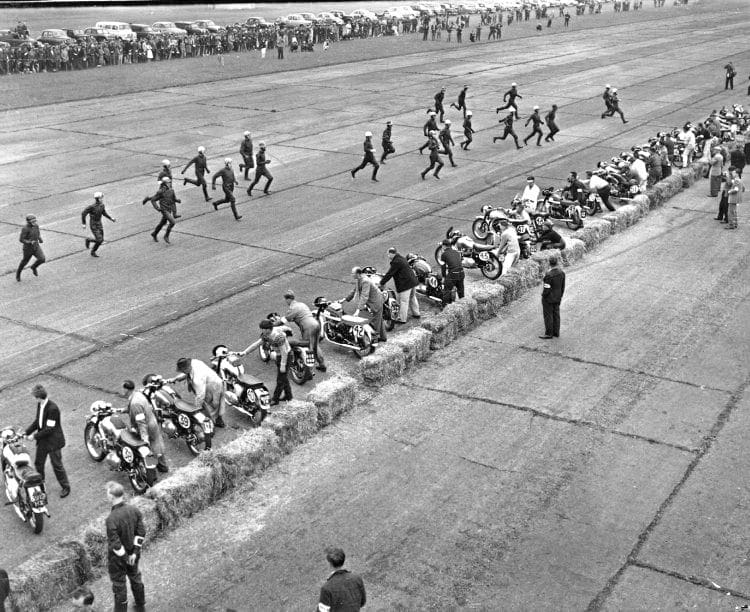Your queries resolved with Richard Rosenthal
Do you or any of your readers know of any motorcycles fitted with impulse starters?
In the 1920s, many engines were fitted with impulse starters including cars, tractors, motorboats and aircraft.
The impulse starter works by driving the magneto through a strong clock-like spring. To start, the magneto is held from turning as the engine turns (is turned) until just after TDC when it’s released. A counter balance sprag that catches the magneto when stopped is disengaged when the engine runs. The slower an engine turns on starting, the easier it will be to start.
Enjoy more Classic MotorCycle reading in the monthly magazine.
Click here to subscribe & save.

Andrew Duncan, NSW, Australia.
Impulse starting is an unknown quantity to me and if any readers can enlighten further, or know of any motorcycles so fitted, we’d all like to learn.
To my understanding, the magneto is coupled to the engine by a spring and sprag ‘impulse coupling.’ As the engine is turned for starting the coupling stops the rotating part of the magneto (armature or magnet) while winding a spring. At the appropriate point, the coupling releases the magneto’s rotating part, which is spun by spring force at much higher speed than generated by turning the engine to start and a better spark is produced than expected at such low speeds. Once the engine runs, the impulse coupling is out of action and normal magneto timing resumes.
The logic here is that at slow speeds the magneto produces low voltage, and the slower it’s turned, the lower the voltage. The impulse coupling rectifies this to an extent by briefly stopping the magneto’s rotating part from turning, then releasing it to spin much faster to the point of flux to give a better spark at the plug.
Although I’ve no direct experience of impulse starters, I do remember a friend of my dad starting a tractor with an impulse starter. He primed the engine (how or which cylinder/cylinders I can’t remember) then turned the engine slowly with the starter handle, until the impulse coupling clicked to release the magneto armature, and the engine duly (usually) started.
Added magnets
Ease of starting, especially with highly-tuned motorcycles, has long been the quest of sporting motorcyclists using magneto ignition.
We encountered another approach, which until recently we had no idea of its worth. The Lucas magdyno of a recently acquired 500cc BSA production racer has the aluminium magneto casing machined back to the magnet and two powerful horseshoe magnets secured at point of flux. Although tatty, the big single was tidied and returned to running order following a 35-year sleep. After a couple of seasons, the machine began to miss at speed, with the magneto the culprit.
It was overhauled by a respected specialist who agreed to return the extra magnets after rebuild, as I requested. On testing, they discovered that the extra magnets offered no spark improvement at over 2500rpm, engine speed. But below 1500rpm the spark progressively improved in comparison to what was usual. At kick-start/bump-start engine speeds, the spark was 20% better than expected. It made perfect sense for use with a big single which was bump-started off the line or Le Mans-type start as the starter’s flag dropped.
All interesting stuff which some will undoubtedly question. However, it is also interesting to know that the machine was built into full production racing trim by its then owner, a qualified aircraft engineer.
Read more of your queries and questions in the June issue of TCM – on sale now!
Advert
 Enjoy more The Classic MotorCycle reading in the monthly magazine. Click here to subscribe.
Enjoy more The Classic MotorCycle reading in the monthly magazine. Click here to subscribe.



